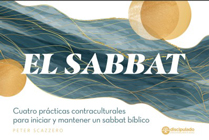Spiritual Direction for Leaders
Can we serve as effective leaders in Christ’s church who lead others spiritually without receiving spiritual direction ourselves? I do not think so. I speak here not simply from the witness of church history but also from my own journey of mistakes and failures. God has recently cemented this lesson in me as I have reflected on a recent decision I made that I wish I had more fully explored in spiritual direction. We don’t talk about the term “spiritual direction” very often in the context of leadership, yet helping people respond to what God is uniquely doing in them is one of the most important things we do. At the same time, being under spiritual direction is also critical. Eugene Peterson, in Working the Angles, warns us: “Our position requires that we act with authority; our faith requires we live in submission. While we are busy passing out the Lord’s commands in our. Read more.






